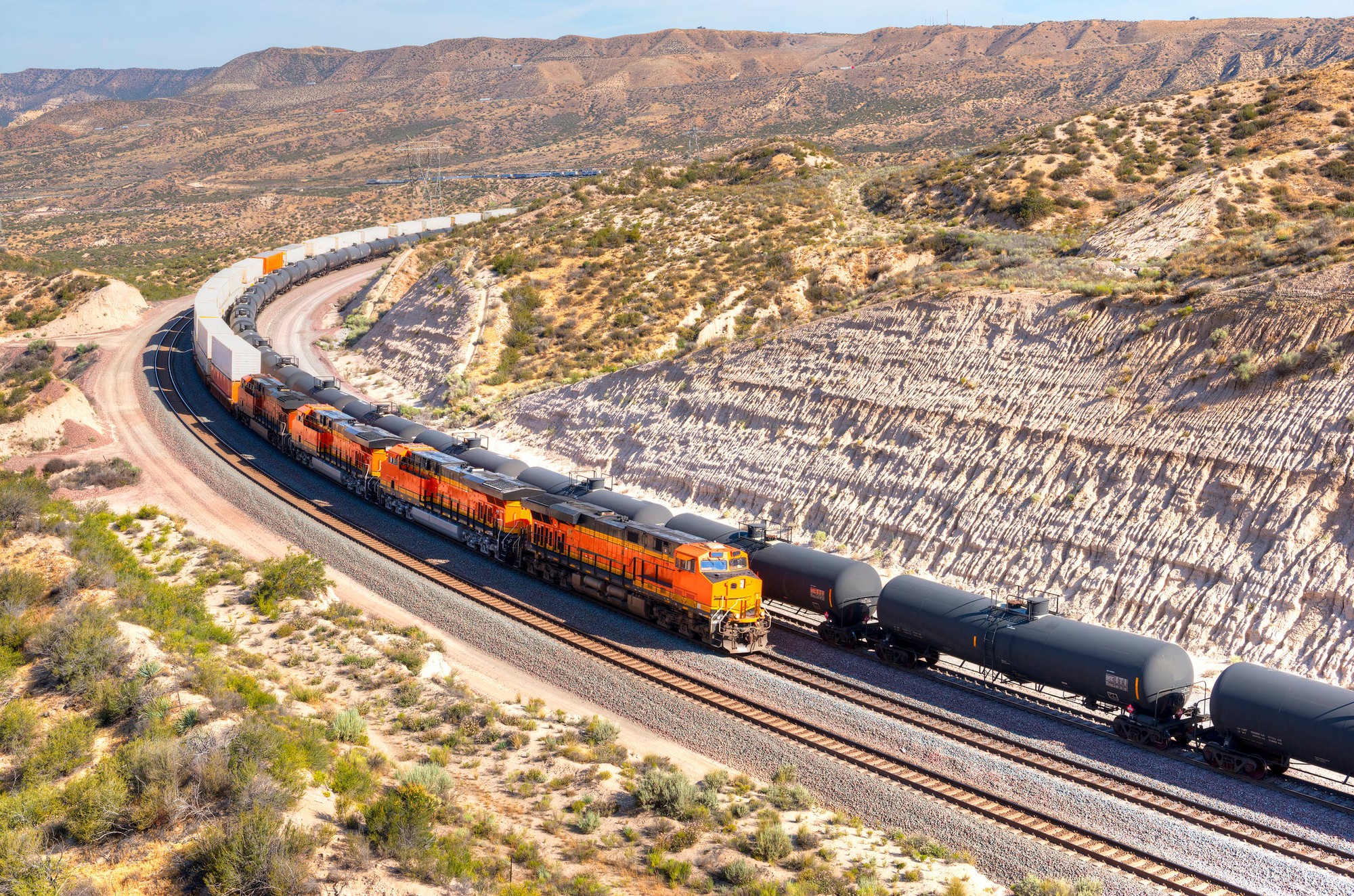It's no secret that the industrial economy is set for a difficult 2020, and that's even before the coronavirus outbreak led to significant shutdowns in economic activity. In this environment, railroads are likely to suffer, and in turn, the companies that supply them will also feel the pinch. However, railroad suppliers like locomotive and component company Wabtec (WAB +0.47%), railcar manufacturer Greenbrier Companies (GBX +1.20%), railcar leasing and railcar manufacturer Trinity Industries (TRN 0.47%), and to a lesser extent Caterpillar face significant uncertainty due to the widescale adoption of precision scheduled railroading, or PSR, management techniques. Here's the lowdown.
Trends in the railroad
If you want to know where an industry is headed, at least in the near term, it's a good idea to look at the spending plans of its major customers. In this case, it's the railroads, and in the U.S. this means the major listed Class 1 railroads like CSX, Union Pacific, Kansas City Southern, and Norfolk Southern.

Image source: Getty Images.
Digging into the details of what these railroads are saying about 2020, there are two key issues for the rail industry suppliers, and they are both negative for investors in the industry. All the railroads are giving mediocre revenue and carload volume outlooks in line with a weak industrial economy, implying constraints on expenditure in 2020. The PSR initiatives are also working to reduce operating ratios (expenses divided by revenue) across the industry, as railroads are generating more productivity from their existing assets.
Cyclical headwinds
The following table summarizes the volume and revenue outlooks from the leading U.S. listed Class 1 railroads. As you can see below, all of them have mediocre outlooks for top-line growth in 2020. However, the good news is that OR ratios are expected to fall, so it's a safe bet that operating expenses are likely to be lower on an absolute basis as well.
|
Railroad |
2020 Outlook |
Full Year 2020 Operating Ratio Outlook |
Full Year 2019 |
|---|---|---|---|
|
Union Pacific (UNP 0.44%) |
Volume slightly positive |
Around 59% |
60.6% |
|
CSX (CSX 0.14%) |
Revenue flat to down 2% |
59% |
58.4% |
|
Kansas City Southern (KSU +0.00%) |
Volume and revenue "better" |
60%-61%, and less than 60% in 2021 |
63.2% |
|
Norfolk Southern (NSC 0.05%) |
Revenue flat |
Less than 61.85%, and 60% by 2021 |
64.7% |
Data source: Company presentations.
Clearly, it's not going to be a banner year for the industry, as the slowdown in the industrial economy will affect revenue growth for the railroads.
Issues are more than just cyclical
The cyclical weakness in the railcar freight is, of course, not a reason for long-term investors to bail out of the industry. After all, the passing of phase 1 of the trade deal raises hopes for a bounce in the industrial economy in the second half, and many industrial companies, including the railroads, are forecasting a better second half.
That might a reason to be bullish on companies like Wabtec, Trinity, and Greenbrier, but the longer-term concern is the growing deployment of PSR by the railroads. In a nutshell, PSR is a set of management principles intended to generate more profit from fewer assets and even less traffic.
Instead of the old hub-and-spoke model whereby a railcar enters a regional hub and is then attached to trains on the way to its final destination, PSR moves railcars from point to point on a network on fixed schedules. Pricing is adjusted in order to make sure cars are used on a route, and an emphasis is placed on improving train velocity, reducing terminal dwell (time spent by a car at a scheduled stop without moving), and improving train length.
What the railroads are saying
The near-term challenges ahead can be seen in the commentary from railroad managements. For example, at the end of Union Pacific's first year of PSR adoption in 2018, the railroad had around 1,200 locomotives in storage, and at the end of 2019 that figure was 3,100 locomotives. Moreover, during the recent earnings call, Union Pacific chief operating officer Jim Vena said: "We will purchase no new locomotives in 2020, although we will continue to modernize our existing fleet" -- not great news for locomotive manufacturers Wabtec and Caterpillar.
It's a similar story at Kansas City Southern, with "No rolling stock purchases currently anticipated in 2020" and the railroad lauding the fact that its active locomotive fleet was down 16% from its peak at the end of 2018.
An industry to avoid?
It's clear that PSR adoption is creating some challenges to the railroad suppliers, but the bullish case -- advocated by Greenbrier CEO William Furman and Trinity Industries senior vice president Eric Marchetto on recent earnings calls -- is that the service improvements generated by PSR are likely to lead to the railroads taking back market share for freight shipping from trucking. The implication is that there could be a pickup in volumes, leading to demand for locomotives and railcars.
They may well be right over the long term, but until you find out if that's the case, you will be investing in an industry facing near-term cyclical and structural challenges. That might test even the most patient of investors.












